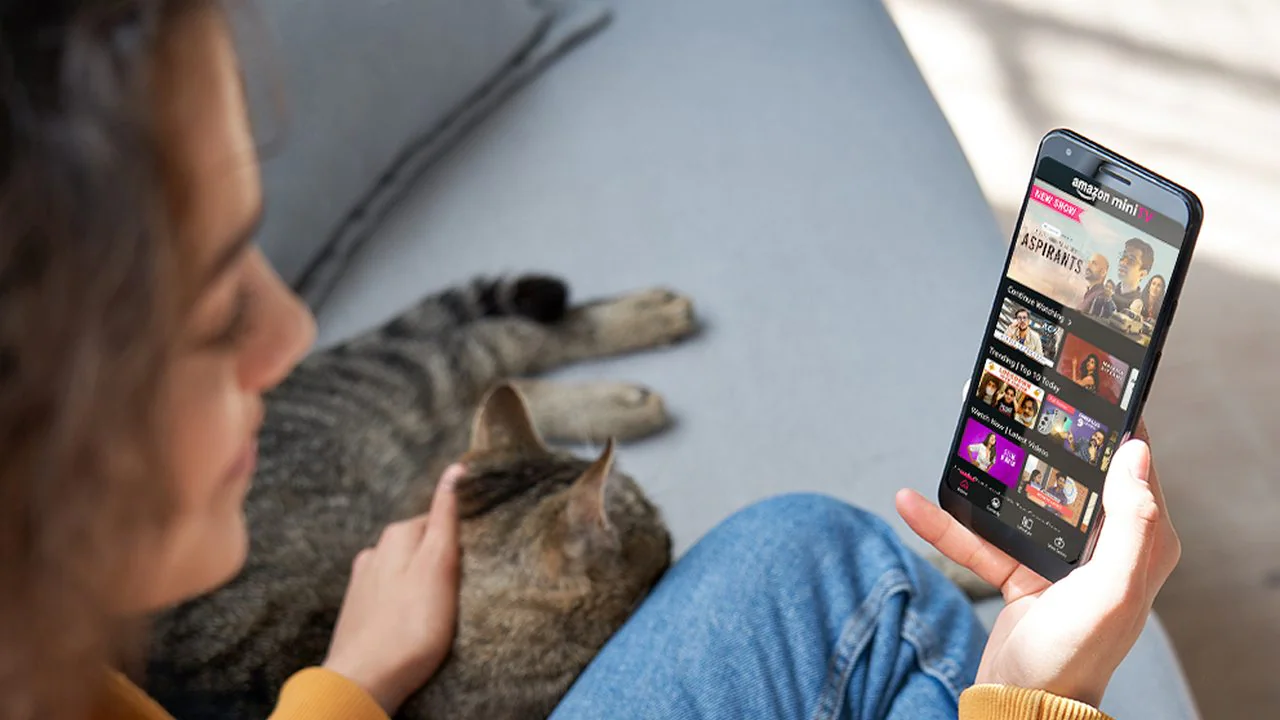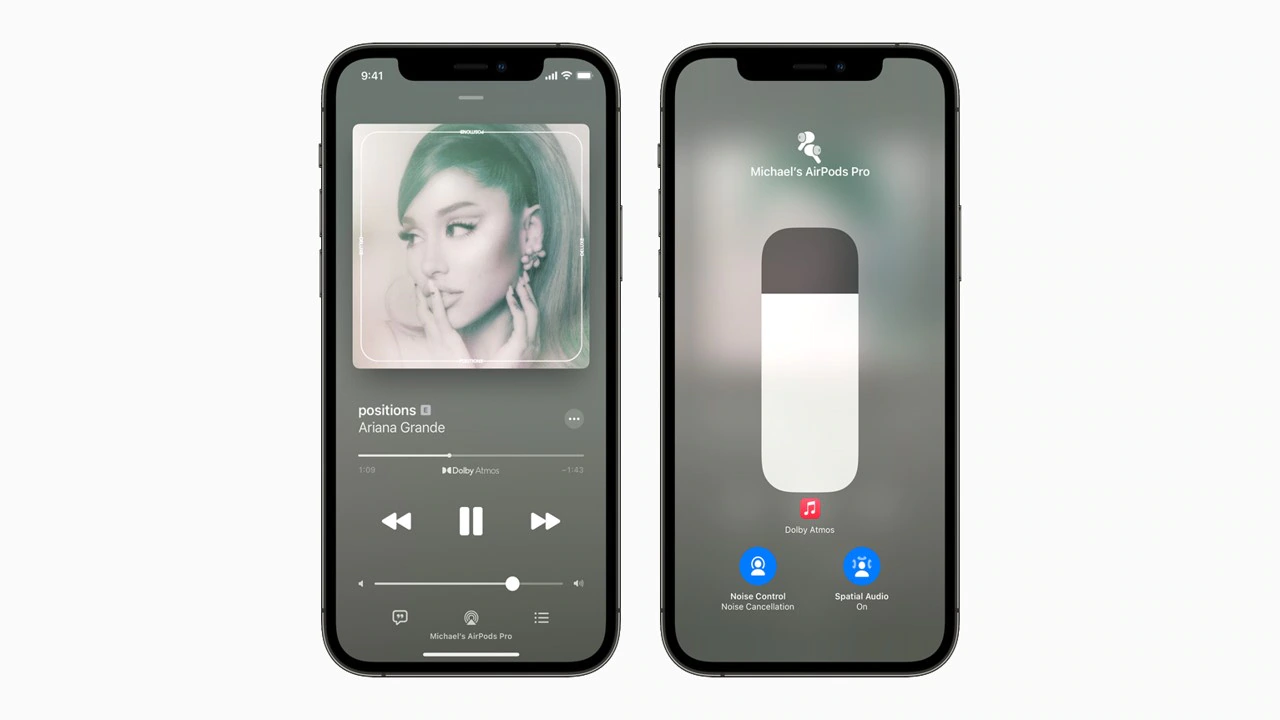We are used to OnePlus phones with T and Pro suffixes, and now, we have one ending with R. Although the suffix is new, there’s hardly anything new about this phone. I can sum up the OnePlus 9R in a single sentence – it is pretty much the OnePlus 8T (Review) with a faster SoC and a new coat of paint. So, where does the OnePlus 9R fit it? Was it really needed? Is it worth buying? We answer all these questions and more in this in-depth review.
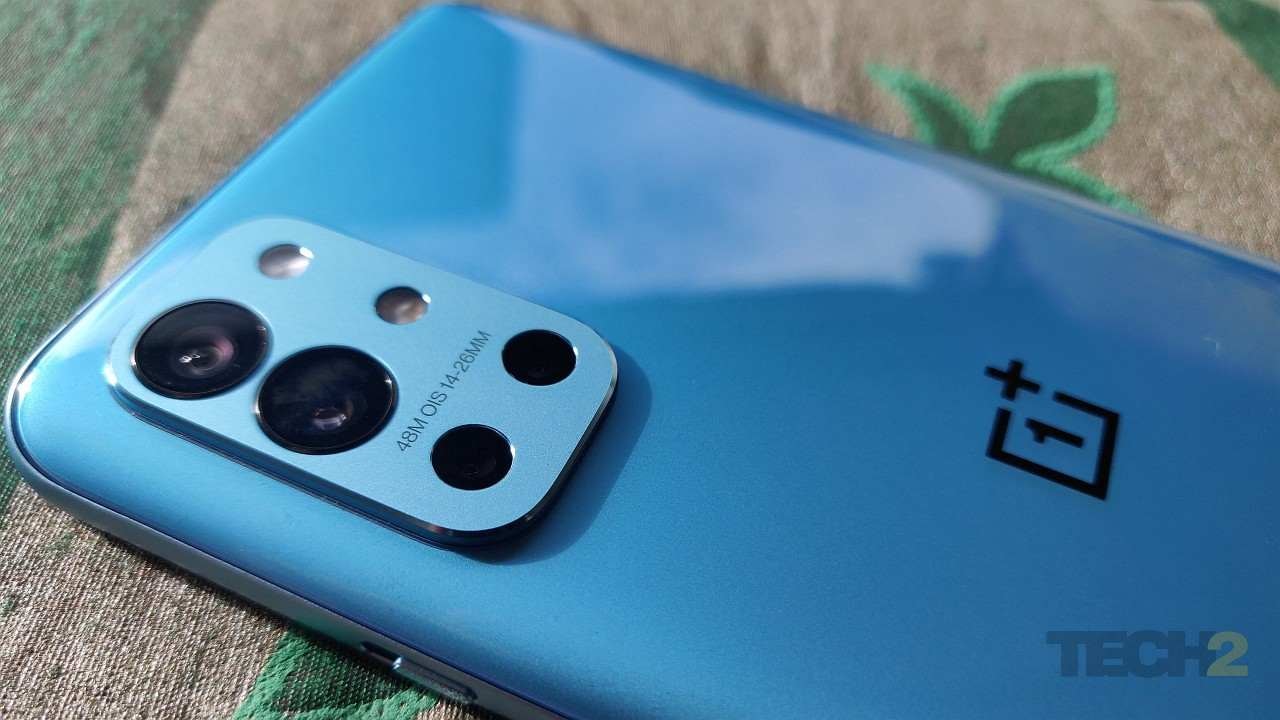
OnePlus 9R. Image: Tech2/Ameya Dalvi
OnePlus 9R Design: Nothing new apart from a nicer colour
In terms of design and size, the OnePlus 9R is exactly like the OnePlus 8T from edge to edge. The 9R, too, feels a little big and bulky, but build quality is solid thanks to the metal frame. The chin is among the smallest in this segment. The Lake Blue variant we received for review is elegant and even more pleasing to the eyes than the Aquamarine Green shade of the 8T. Smudges and fingerprints are barely visible on its glass back, but I can’t say the same about its screen. The display and the back of the phone are protected against scratches by Corning Gorilla Glass.
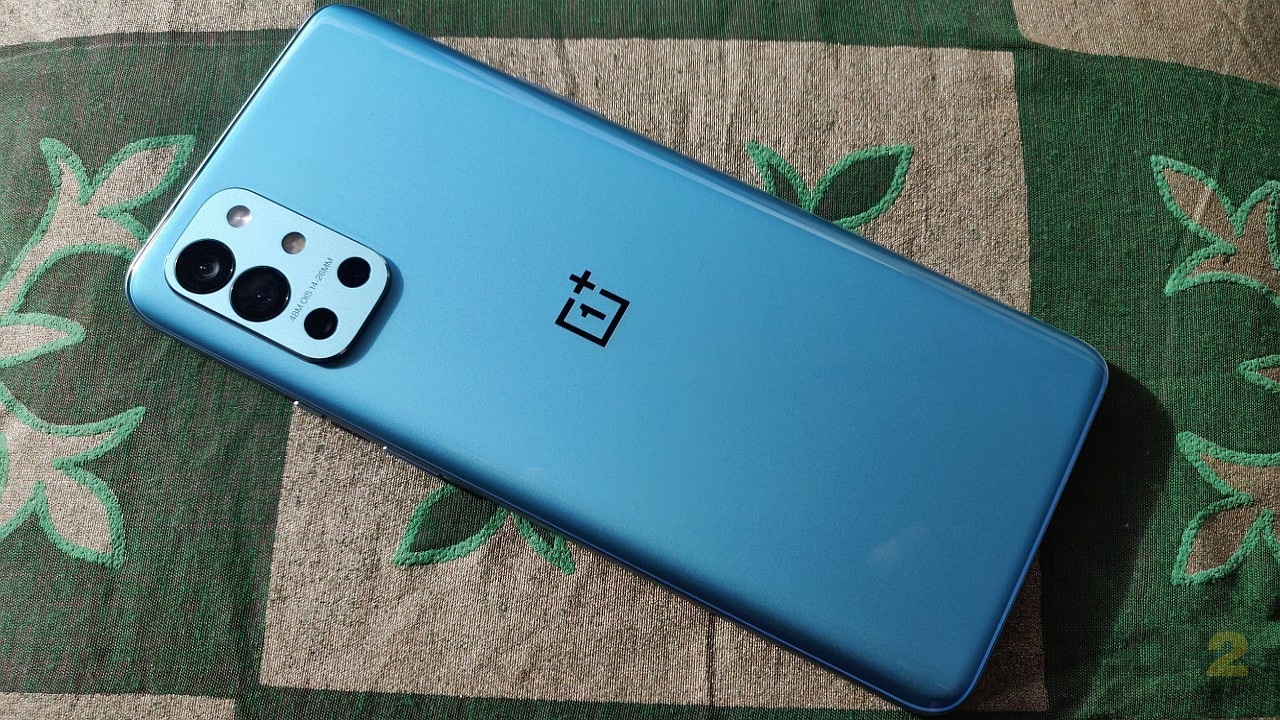
The OnePlus 9R feels a little big and bulky, but build quality is solid thanks to the metal frame. Image: Tech2/Ameya Dalvi
At the back, you get a 2 x 3 rectangular array on the top left, which includes four cameras and dual flashes. The only difference here as compared to the 8T is the Lake Blue shade extends to the camera module, too, as opposed to a black finish on the 8T. No complaints about that. You get an in-display fingerprint scanner, and just like in the case of the OnePlus 8T, it is placed a little higher than usual, making it easier to access. The scanner is highly responsive and works perfectly well. The punch-hole selfie camera retains its position near the top left corner of the screen.
The SIM tray is present along the bottom edge of the phone, and it can accommodate up to two nano-SIMs. The OnePlus 9R is 5G-ready, but you can use up to two 4G SIMs till the time 5G becomes available in India. Next to the SIM tray are a USB-C port and the phone speaker. The volume rocker is placed along the left edge, and the power button is located on the right edge along with the popular alert slider. The power button is easier to reach but hitting the volume up button can be a stretch; a centimetre lower would have been a better position for the volume rocker.
OnePlus 9R key specifications
- Qualcomm Snapdragon 870 SoC: 1 x 3.2 GHz Kryo 585 core + 3 x 2.42 GHz Kryo 585 cores + 4 x 1.8 GHz Kryo 585 cores
- Adreno 650 GPU
- 8 GB or 12 GB RAM options
- 128 GB or 256 GB UFS 3.1 internal storage
- 55-inch Full HD+ (2400 x 1080) Fluid AMOLED display with 120 Hz refresh rate and Corning Gorilla Glass
- Cameras: 48 MP with PDAF and OIS (main) + 16 MP (ultra-wide) + 5 MP (macro) + 2 MP (Monochrome); 16 MP (wide) selfie camera
- 4,500 mAh battery with bundled 65 W fast charger
- Android 11 with OxygenOS 11
- 5G-compliant; Bluetooth 5.1; Dual band Wi-Fi a/b/g/n/ac/ax
OnePlus 9R Price in India
Rs 39,999 for 8 GB RAM with 128 GB internal storage
Rs 43,999 for 12 GB RAM with 256 GB internal storage
OnePlus 9R Display: If it ain’t broke, don’t fix it
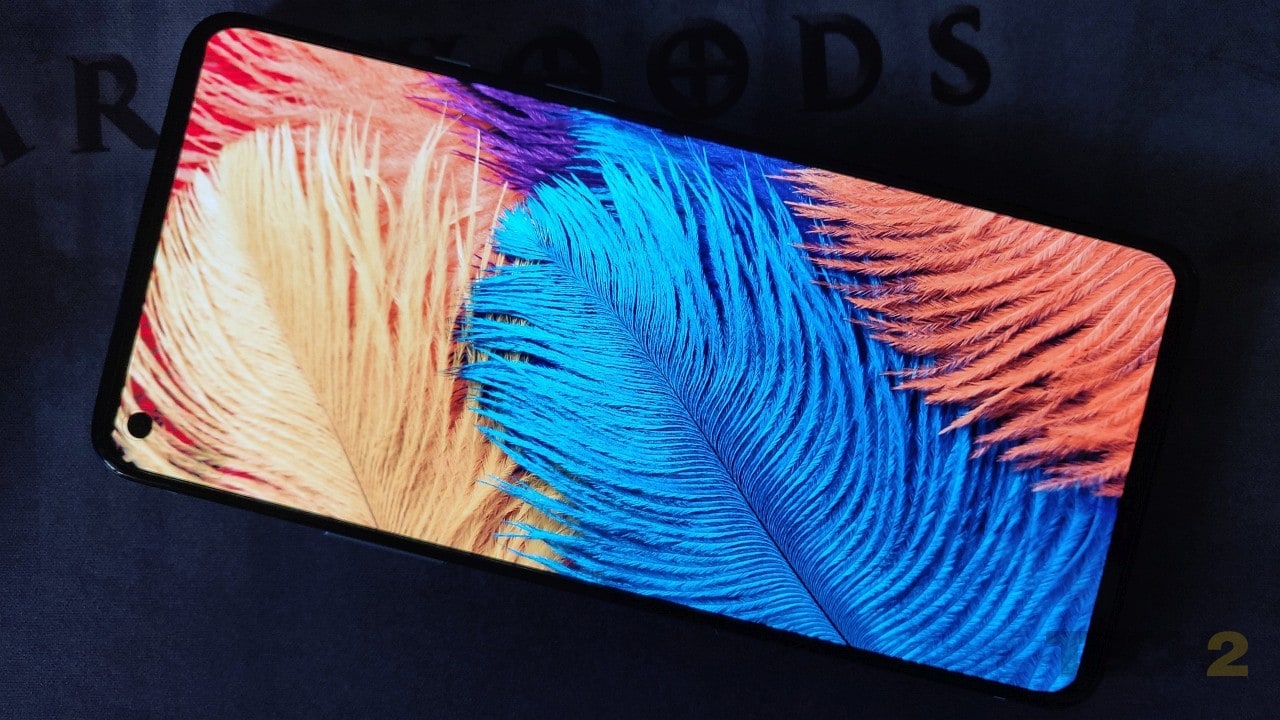
The display is vibrant and super smooth when scrolling in compatible apps. Image: Tech2/Ameya Dalvi
The OnePlus 9R borrows the same 6.55-inch Fluid AMOLED display with a resolution of 2400 x 1080 pixels with a 120 Hz refresh rate that you get on the 8T as well as the OnePlus 9 (Review). The display was one of the standout features of the 8T, and there was no need for a change yet. It is vibrant and super smooth when scrolling in compatible apps. You get an option to switch the refresh rate from 120 Hz to 60 Hz to save battery, but just leave it at 120 Hz, as it switches to 60 Hz automatically in apps that don’t support it. The screen is HDR10+ compliant, and compatible HDR content from most OTT platforms looks lively on this screen.
The black levels and contrast are excellent, and so is the colour reproduction. As always, in Vivid mode they feel a bit too boosted; some people like it that way. For the rest, it’s better to switch to Natural mode where the colours may look a tad dull in comparison but are a lot more accurate. The phone also offers some manual calibration options in case you’re interested. The ambient display function is present here and provides basic information like the time, date, battery status and notifications when you tap the screen or lift the phone.
OnePlus 9R Performance: Second fastest but still powerful enough
The OnePlus 9R is powered by Qualcomm’s Snapdragon 870 SoC, which is nothing but a Snapdragon 865 with one faster core. Unlike other phones in the OnePlus 9 series, the company hasn’t opted for a Snapdragon 888 here. Despite that, it is extremely powerful for absolutely anything one would look to do on a phone. Our test unit had 12 GB RAM and 256 GB of UFS 3.1 internal storage to go with it. The performance of this smartphone is top-notch. There was absolutely no lag in day-to-day operations in any of the usual apps, or when switching between multiple apps.
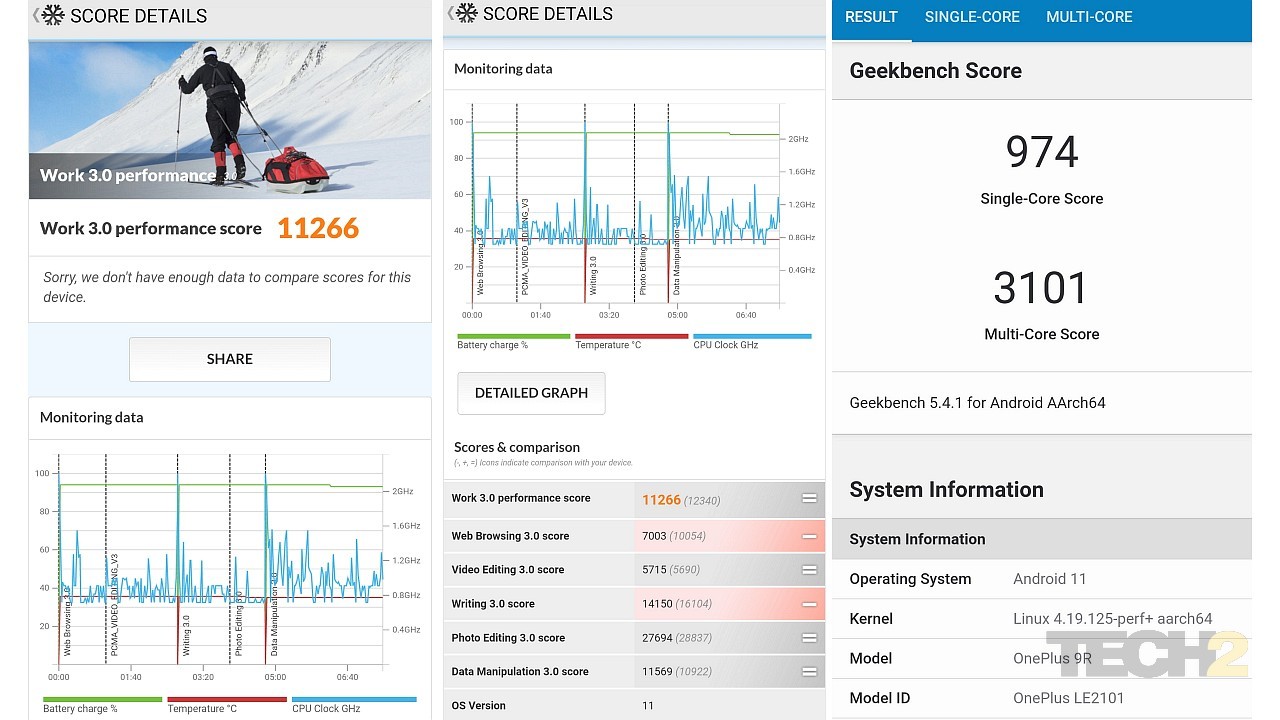
Geekbench and PC Mark
OnePlus touts this as a gaming phone, and it lives up to that moniker basis the sheer power it possesses. Although there aren’t any significant extras like in the case of Asus ROG phones, the overall gaming experience was stutter-free and enjoyable at the highest settings. The phone didn’t heat up much even after 30 minutes of gaming. The dual stereo speakers (earpiece and bottom speakers) manage to produce surprisingly good quality audio with a decent stereo effect. The phone supports AptX, AptX HD and LDAC for better throughput over Bluetooth 5.1 on earphones that support those codecs. No issues with call quality, either.
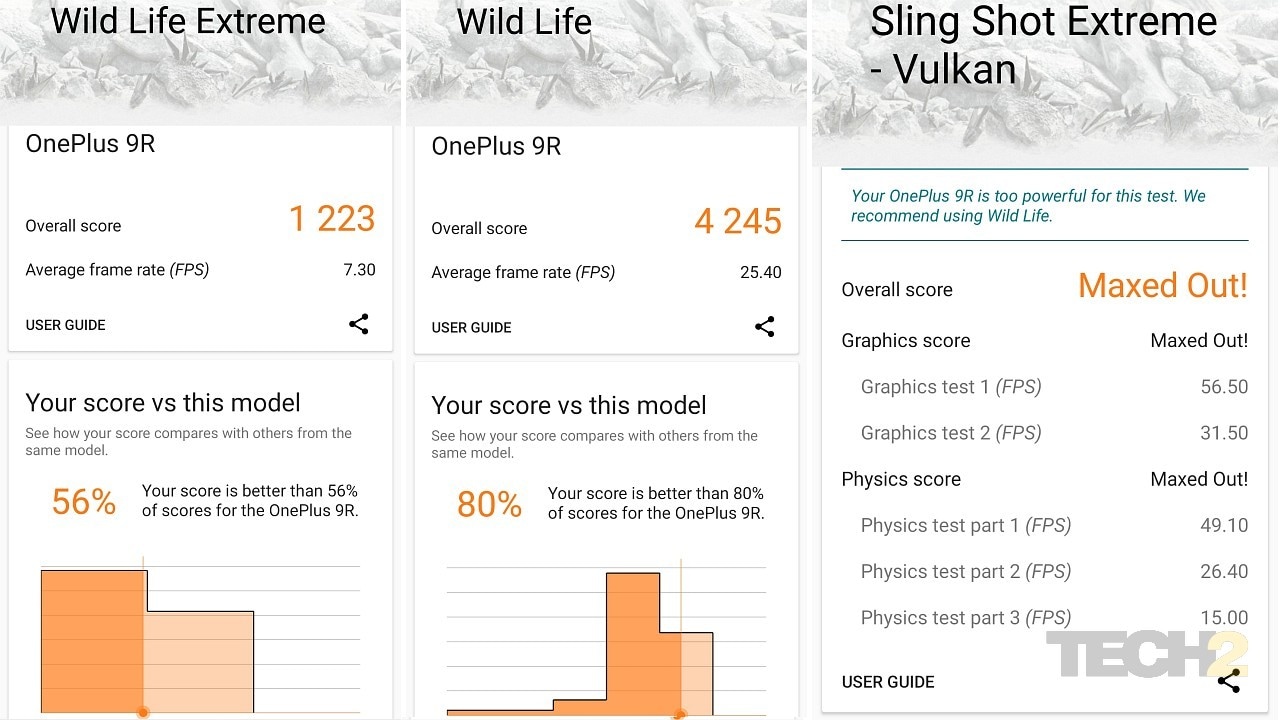
3DMark results
In performance benchmarks, it posted remarkably high scores. In fact, it maxed out in some of the benchmarks such as 3DMark Sling Shot Extreme – Vulkan, and we had to opt for an upgraded set of tests to challenge the phone’s hardware. While I will list those scores here, they cannot be compared directly to older devices for obvious reasons. Geekbench 5 scores, however, can be compared. The 9R recorded a Single-core score of 974 as opposed to 893 on the 8T; an expected jump given the faster primary core on the Snapdragon 870. The Multi-core score stood at 3,101, two percent lower than the 3,169 scored by the 8T. The difference won’t be noticeable in real world use, though.
We moved on from PC Mark Work 2.0 to version 3.0, and it managed to score 11,266. We cannot compare it with the version 2.0 scores, but it will serve as a good reference point for future smartphone reviews. Similarly, we replaced the 3DMark Sling Shot Extreme – Vulkan benchmark with Wild Life and Wild Life Extreme benchmarks. The Adreno 650 GPU returned scores of 4,245 and 1,223 respectively in those two tests with 25.4 and 7.3 average FPS. While the Wild Life Extreme benchmark does drag it down to its knees, let’s not forget it’s a synthetic benchmark. In real-world gaming with the currently popular games, I observed no drop in performance; so, there’s nothing to worry about.
OnePlus 9R battery performance: Good battery life, superfast charging
Like most things, battery capacity and battery life of the 9R are pretty much the same as that of the 8T. The 4,500 mAh battery manages to power the phone for over 30 hours of normal use, that includes generous amounts of browsing through messaging and social media apps, a few calls, clicking a few photos, an hour of watching videos and half an hour of gaming. These are perfectly acceptable figures.
If the battery life is good, charging times are even better. The company bundles a 65 W Warp charger that can do 10V/6.5A, but is a little different from the one you get with the 8T. It charges the phone from 0 to 100 percent in under 45 minutes; a little longer than the 39 minutes the 8T takes, but a great number nonetheless. Neither the charger nor the phone heated up after a full charge.
OnePlus 9R camera performance: Marginally better than the 8T, but no Hasselblad

The primary camera captures some crisp shots in bright to average lighting with good dynamic range. Image: Tech2/Ameya Dalvi
The camera configuration here is the same as what you get on the 8T. What we have here is a 48 MP primary camera based on Sony IMX586 sensor with PDAF and optical image stabilisation – something missing on the more expensive OnePlus 9. Giving it company are a 16 MP ultra-wide camera with Sony IMX481 sensor and 123 degrees FOV, a 2 MP monochrome camera and a 5 MP macro camera. The camera app gives you a quick toggle option to switch between regular, ultra-wide and zoom modes.
The primary camera captures some crisp shots in bright to average lighting with good dynamic range. As is the case with most OnePlus phones, the colours feel saturated, but slightly better than those captured using the 8T. It’s probably similar on the 8T as well by now, after the handful of updates it has received since launch. Despite being a 9 series phone, it isn’t blessed by Hasselblad’s colour tuning like its more expensive siblings. The colours in captured images did feel a lot more natural on the OnePlus 9 in comparison.
Having said that, the pictures look sharp here with a good amount of detail, and not many would complain about the extra vibrance in colours. The ultrawide camera is more than decent, but it’s not in the same league as the OnePlus 9’s. The output is rather good in well-lit conditions, but the images feel a little softer in comparison to those captured using the main camera; however, the images have comparable dynamic range. You also get a couple of new filters in the camera app to play around with.
Click here to see the camera samples:

Portrait mode works well here with good foreground and background separation. The images come out well, be it with human subjects or other objects. The 5 MP fixed focus macro camera is serviceable at best. You also need to have steady hands if you do not want blur in the images, and despite that, the output is a bit soft, and the colours look washed out. It is never a bad idea to capture the image from a little further away using the main camera and then crop it. More often than not, you get better results than you would with the basic, fixed focus macro cameras.
The company continues to make good use of the cropping technique. Despite the absence of a telephoto camera, you get some sharp 2X zoom shots that are noticeably better than the usual digitally zoomed images. When using 2X zoom, the camera app first captures in 48 MP mode, and then crops a specific section of the image and resizes it, thus resulting in a superior output. That remains a smart way to compensate for the lack of a dedicated telephoto camera.
Low-light photography is at par with that of the OnePlus 8T, but stick to the main camera itself when the light dips. It tends to gain well and makes images brighter even when not using Nightscape mode. Noise is kept in check and there is a good amount of detail in captured shots. Nightscape mode improves things further if the light is low but takes a tad longer to process the shot. At times, the Nightscape shots feel overexposed; so try with and without it in low light. 2X zoom works fine in low light too, but don’t expect miracles. Avoid using the ultra-wide camera in poor light, as the captured images are low on detail.
The 16 MP front camera with the Sony IMX471 sensor is quite competent in well-lit conditions. Selfies are sharp, and skin tones looks natural. It supports portrait shots as well, but they can be a hit or a miss. When the front camera is switched on, a speck of light circles the camera and settles into a green dot next to it. That makes it easier to spot the camera within the dark borders of the camera app, and people know where to look.
The rear cameras on the OnePlus 9R can record videos in 1080p and 4K resolution at 30 and 60 fps, and slow motion 1080p and 720p videos at 240 and 480 fps, respectively. It also lets you record timelapse videos at 30 fps in Full HD or 4K resolution. Captured 4K footage looks crisp and stabilised, courtesy of EIS (electronic image stabilisation). 1080p videos shot on the main camera look sharp with good colours.
OS and user interface: Android 11 and OxygenOS 11 are still a great team
Not much has changed in this department other than a few evolutionary updates and newer security patches. You get OxygenOS 11 based on Android 11 out of the box. OxygenOS 11 continues to be the best Android UI around. It is clean, stutter-free, devoid of ads and with truly little bloatware. It adds a handful of useful enhancements without deviating far from stock Android UI. Again, OnePlus has opted for the Google dialler, contacts and messaging apps instead of its own. The trend started with the Nord, and I guess that’s how it’ll be going ahead.
One thing I genuinely appreciate about OxygenOS 11 is how it strives to facilitate single-handed operation by using a common-sense approach. Right from the settings menu to compatible apps, the content starts from the middle of the screen where it’s a lot easier to reach with the thumb. Once you start scrolling, it utilises the rest of the screen space above. You don’t have to bother stretching your thumb to the top of the screen to tap on anything, you can simply drag it down so it’s within reach. Simple and convenient!
Final words: Was this phone really needed in its current avatar?
The OnePlus 9R sells in India at Rs 39,999 for the 8 GB RAM / 128 GB storage variant and Rs 43,999 for its 12 GB RAM variant with 256 GB storage. Is it worth buying? We have sufficiently established this is pretty much a renamed OnePlus 8T with a slightly faster SoC. The pricing of the 9R was lower than the 8T’s at launch and is a good Rs 10,000 lower than the OnePlus 9. On that count alone, it offers excellent value for money and is a solid all-round device at its selling price, despite the lack of novelty.
It would have made sense to have a device like that in the absence of the 8T. But the OnePlus 8T is still available, and to complicate matters further, OnePlus has dropped its price to below that of the 9R’s and cannibalised it. As long as the OnePlus 8T is still available at a lower price, it makes little sense to buy the 9R, unless you love the Lake Blue shade or need a bit of extra muscle. I would like to assume the company will soon clear 8T stocks and afford the 9R some breathing space. Nevertheless, I strongly feel OnePlus should have bolstered the 9R with some meaningful differentiators rather than making it look like a marketing ploy to use up surplus OnePlus 8T hardware with a 9 series stamp.
Find latest and upcoming tech gadgets online on Tech2 Gadgets. Get technology news, gadgets reviews & ratings. Popular gadgets including laptop, tablet and mobile specifications, features, prices, comparison.




